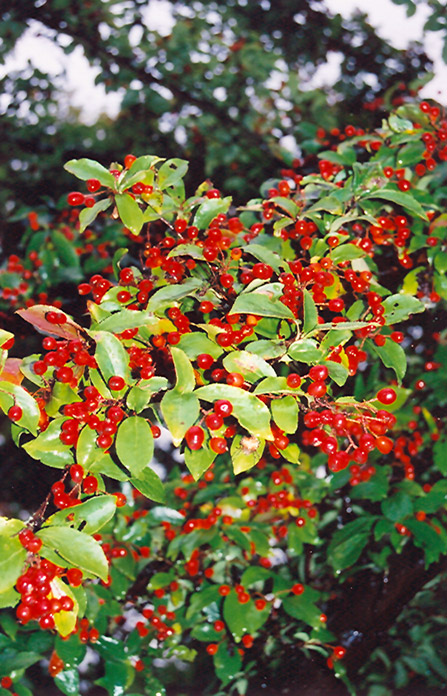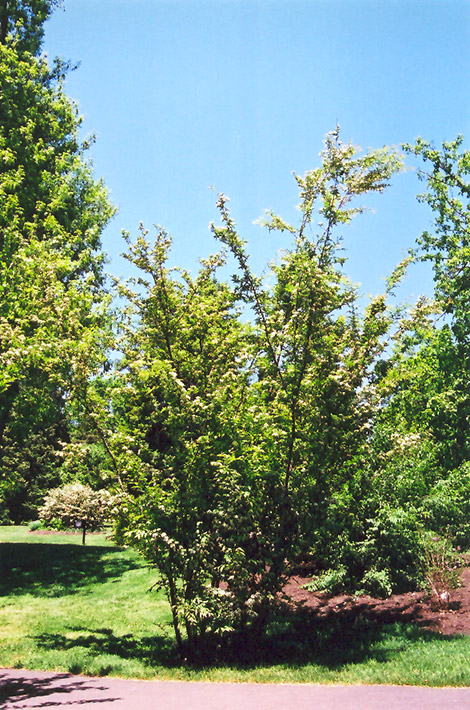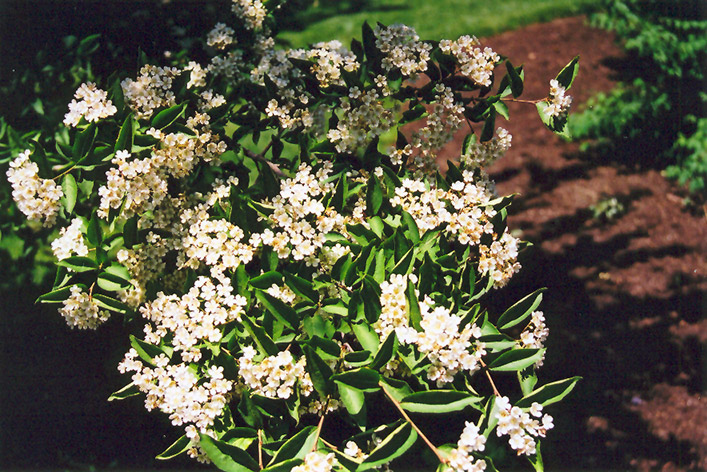Plant Finder
Height: 10 feet
Spread: 7 feet
Sunlight:
![]()
![]()
Hardiness Zone: 5
Other Names: Oriental Photinia
Description:
An attractive large shrub which features racemes of pretty white flowers in spring followed by showy red berries and good red fall color; attracts birds in early winter
Ornamental Features
Christmas Berry is primarily grown for its highly ornamental fruit. The fruits are showy red pomes carried in abundance from mid to late fall. It is clothed in stunning clusters of white flowers with yellow anthers held atop the branches from mid to late spring. It has dark green deciduous foliage. The pointy leaves turn an outstanding orange in the fall.
Landscape Attributes
Christmas Berry is a multi-stemmed deciduous shrub with an upright spreading habit of growth. Its average texture blends into the landscape, but can be balanced by one or two finer or coarser trees or shrubs for an effective composition.
This is a high maintenance shrub that will require regular care and upkeep, and should only be pruned after flowering to avoid removing any of the current season's flowers. It is a good choice for attracting birds to your yard. Gardeners should be aware of the following characteristic(s) that may warrant special consideration;
- Disease
Christmas Berry is recommended for the following landscape applications;
- General Garden Use
Planting & Growing
Christmas Berry will grow to be about 10 feet tall at maturity, with a spread of 7 feet. It tends to be a little leggy, with a typical clearance of 1 foot from the ground, and is suitable for planting under power lines. It grows at a medium rate, and under ideal conditions can be expected to live for 40 years or more.
This shrub does best in full sun to partial shade. It is very adaptable to both dry and moist growing conditions, but will not tolerate any standing water. It is considered to be drought-tolerant, and thus makes an ideal choice for xeriscaping or the moisture-conserving landscape. It is not particular as to soil type, but has a definite preference for acidic soils. It is somewhat tolerant of urban pollution. This species is not originally from North America.
Disclaimer - Rutgers Landscape & Nursery Plant Finder is an online resource representing many of the varieties that we carry over the course of the season, and is intended for informational purposes only. Inventory varies seasonally, so we cannot guarantee that every plant will be in stock at all times - please contact Rutgers directly for current availability.



